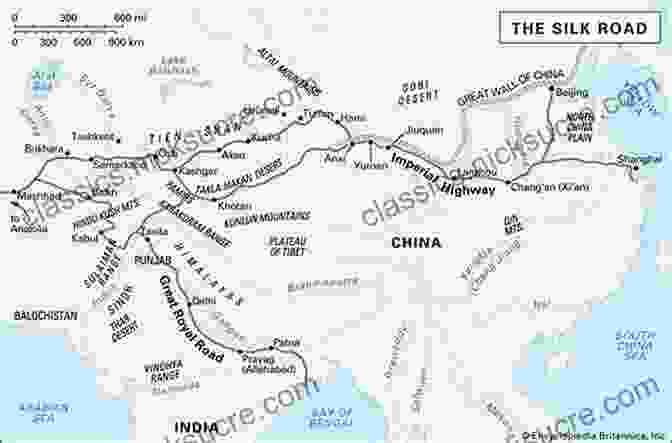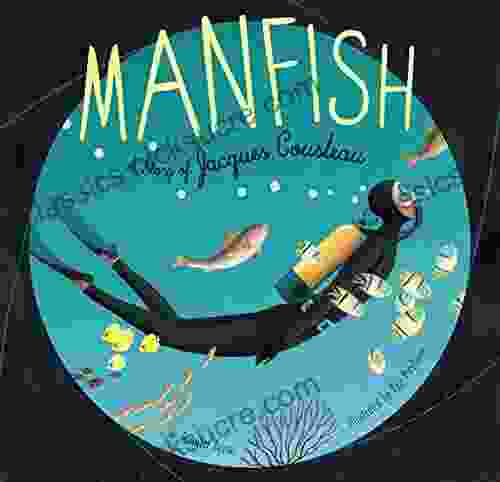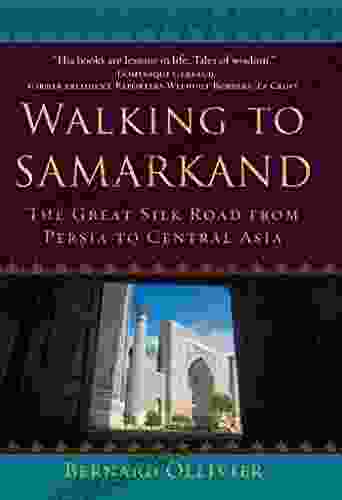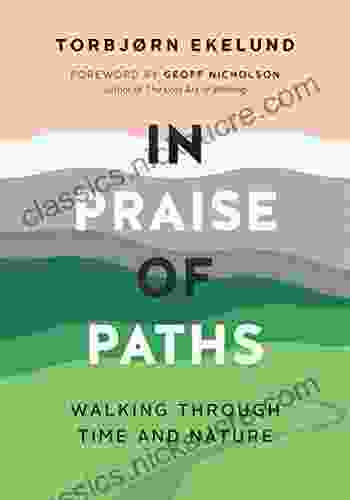Unraveling the Tapestry of the Great Silk Road: From Persia to Central Asia

4.4 out of 5
| Language | : | English |
| File size | : | 2942 KB |
| Text-to-Speech | : | Enabled |
| Screen Reader | : | Supported |
| Enhanced typesetting | : | Enabled |
| X-Ray | : | Enabled |
| Word Wise | : | Enabled |
| Print length | : | 336 pages |

Map of The Great Silk Road
The Great Silk Road was an extensive network of trade routes that connected the East and West for over two millennia. It stretched from the Mediterranean Sea in the west to China in the east, passing through diverse regions and civilizations. This article focuses on the Silk Road's route from Persia (present-day Iran) to Central Asia, exploring its history, cultural impact, and economic significance.
Historical Roots
The Silk Road's origins can be traced back to the 2nd century BCE, when the Han Dynasty of China expanded westward. Chinese merchants sought access to Central Asian horses, which were highly valued for their military prowess. In exchange, they offered Chinese silk, which became a coveted luxury item in the West.
Over time, the Silk Road became a conduit for a wide range of goods, including spices, textiles, precious stones, and religious texts. It also facilitated the exchange of ideas, technologies, and artistic styles between different cultures.
The Persian Leg
Persia played a crucial role in the Silk Road network. It was a major source of silk production and also served as a gateway between the Middle East and Central Asia. Persian cities such as Merv and Nishapur were important hubs for trade and commerce.
The Silk Road from Persia to Central Asia traversed the rugged terrain of the Iranian Plateau and the vast deserts of Turkmenistan. Caravans of merchants transported their goods along these arduous routes, often facing treacherous conditions and the threat of bandits.
Central Asian Crossroads
Central Asia was a melting pot of cultures along the Silk Road. The region was home to the Sogdian, Bactrian, and Scythian civilizations, each with its distinct traditions and languages. These cultures acted as intermediaries between Persia and China, facilitating trade and cultural exchange.
Important cities along the Central Asian stretch of the Silk Road included Samarkand, Bukhara, and Khiva. These cities grew wealthy and influential, becoming centers of learning and commerce. The Silk Road also played a significant role in the spread of Buddhism from India to Central Asia and China.
Cultural Impact
The Silk Road was not merely a commercial enterprise; it also had a profound cultural impact on the regions it connected. The exchange of goods and ideas led to the development of new art forms, architectural styles, and religious beliefs.
- Artistic Influence: Chinese silk, ceramics, and lacquerware influenced Islamic art and architecture. Persian miniature painting techniques spread to Central Asia and China, resulting in a fusion of Eastern and Western artistic styles.
- Religious Exchange: Buddhism spread from India to Central Asia and China along the Silk Road. Nestorian Christianity and Manichaeism also found followers in these regions. The Silk Road facilitated the dissemination of religious texts and the interaction between different faiths.
- Technological Advancements: The exchange of knowledge and technologies along the Silk Road led to advancements in agriculture, astronomy, and papermaking. The Chinese introduced gunpowder to the West, while the Persians shared their knowledge of water management and irrigation.
Economic Significance
The Silk Road was a major conduit of economic activity for centuries. It facilitated the flow of goods and wealth between different regions, stimulating production and trade.
- Chinese Silk: Chinese silk was the most valuable commodity traded along the Silk Road. It was highly prized in the West for its beauty, durability, and rarity.
- Central Asian Horses: Central Asian horses were sought after by both the Chinese and the Persians for their military value. They were renowned for their speed, endurance, and maneuverability.
- Spices: Spices from India, such as pepper, cinnamon, and cloves, were highly valued in the West for their culinary and medicinal properties.
- Precious Stones: Central Asia and Persia were major sources of precious stones, including rubies, emeralds, and sapphires.
Decline and Legacy
The Silk Road began to decline in the 15th century due to various factors, including the rise of maritime trade routes, political instability, and the Mongol invasions. However, its legacy continues to shape the cultural and economic landscape of the regions it once connected.
Modern initiatives, such as the Belt and Road Initiative, seek to revive the spirit of the Silk Road and promote cooperation and economic development between Asia and Europe. The ancient trade routes of the Silk Road remain a testament to the interconnectedness of human civilizations and the lasting impact of cultural exchange.
The Great Silk Road from Persia to Central Asia was a vast and transformative network that played a pivotal role in the development of human civilization. It facilitated economic growth, cultural exchange, and the dissemination of ideas and technologies across continents. The legacy of the Silk Road continues to inspire and inform our understanding of the interconnectedness of human history and the importance of global cooperation.
4.4 out of 5
| Language | : | English |
| File size | : | 2942 KB |
| Text-to-Speech | : | Enabled |
| Screen Reader | : | Supported |
| Enhanced typesetting | : | Enabled |
| X-Ray | : | Enabled |
| Word Wise | : | Enabled |
| Print length | : | 336 pages |
Do you want to contribute by writing guest posts on this blog?
Please contact us and send us a resume of previous articles that you have written.
 Fiction
Fiction Non Fiction
Non Fiction Romance
Romance Mystery
Mystery Thriller
Thriller SciFi
SciFi Fantasy
Fantasy Horror
Horror Biography
Biography Selfhelp
Selfhelp Business
Business History
History Classics
Classics Poetry
Poetry Childrens
Childrens Young Adult
Young Adult Educational
Educational Cooking
Cooking Travel
Travel Lifestyle
Lifestyle Spirituality
Spirituality Health
Health Fitness
Fitness Technology
Technology Science
Science Arts
Arts Crafts
Crafts DIY
DIY Gardening
Gardening Petcare
Petcare Jeff Feldhahn
Jeff Feldhahn Michael Higgins
Michael Higgins Peter Turchin
Peter Turchin Nicholas Johnson
Nicholas Johnson Kay L Moody
Kay L Moody Jamie Davis
Jamie Davis Sue Dumais
Sue Dumais Bianca Scardoni
Bianca Scardoni Graham Poll
Graham Poll Mark Murphy
Mark Murphy John U Bacon
John U Bacon Sasha Sagan
Sasha Sagan Steve Schwartz
Steve Schwartz Dr Deirdre Clark
Dr Deirdre Clark Ken Shamrock
Ken Shamrock Anthony Edwards
Anthony Edwards Peter Grey
Peter Grey David Shoemaker
David Shoemaker Gareth James
Gareth James Creek Stewart
Creek Stewart Christopher Van Tilburg
Christopher Van Tilburg New Scientist
New Scientist Patrick Leigh Fermor
Patrick Leigh Fermor Lamar Underwood
Lamar Underwood Lucy Sutcliffe
Lucy Sutcliffe Neva Sullaway
Neva Sullaway Katie Hewett
Katie Hewett Maria Del Mar Sacasa
Maria Del Mar Sacasa Bruce Bryans
Bruce Bryans Sabrina Sargent
Sabrina Sargent David H Stern
David H Stern Lorraine Evans
Lorraine Evans Jessica Megan Larson
Jessica Megan Larson Russ King
Russ King Beth Jacobs Phd
Beth Jacobs Phd Merlisa Lawrence Corbett
Merlisa Lawrence Corbett Henry Stedman
Henry Stedman Lena Empyema
Lena Empyema Cindy Pawlcyn
Cindy Pawlcyn Laurence Parent
Laurence Parent Jean Liedloff
Jean Liedloff Christopher Paolini
Christopher Paolini Carl Hiaasen
Carl Hiaasen Eric Stice
Eric Stice William S Vincent
William S Vincent Warren Hilton
Warren Hilton Margaret Bemister
Margaret Bemister Sarah Kowalski
Sarah Kowalski Kristen Welch
Kristen Welch Micheal J Murphy
Micheal J Murphy Rina Mae Acosta
Rina Mae Acosta Erika Larkin
Erika Larkin Marlo Thomas
Marlo Thomas Jo Wimpenny
Jo Wimpenny Dr Julie Shannon
Dr Julie Shannon Skeleton Steve
Skeleton Steve Julie Hall
Julie Hall Michael Mckinley
Michael Mckinley Julie Kagawa
Julie Kagawa Jennifer L Lopez
Jennifer L Lopez Richard Freeman
Richard Freeman Olivia Seltzer
Olivia Seltzer Yury Kronn
Yury Kronn Julie Schoen
Julie Schoen Dave Heller
Dave Heller Kathryn Aalto
Kathryn Aalto Ken Bain
Ken Bain Christine Gross Loh
Christine Gross Loh Christopher D Winnan
Christopher D Winnan Anne Griffin Perry
Anne Griffin Perry James Lock
James Lock Peter Lipton
Peter Lipton Lexie Williamson
Lexie Williamson Supersummary
Supersummary Jacob Erez
Jacob Erez Chad Noreuil
Chad Noreuil Kim Hutchinson
Kim Hutchinson Kindle Edition
Kindle Edition Annie Brock
Annie Brock John N Carbone
John N Carbone David Cayley
David Cayley Melinda Sharma
Melinda Sharma Filipe Masetti Leite
Filipe Masetti Leite Anthony E Wolf
Anthony E Wolf Anne Winkler Morey
Anne Winkler Morey Ascencia Pharmacy Technician Exam Prep Team
Ascencia Pharmacy Technician Exam Prep Team Jody Studdard
Jody Studdard Steve Mchugh
Steve Mchugh Ross W Greene
Ross W Greene Terri Schneider
Terri Schneider Marv Wolfman
Marv Wolfman Anne Blythe
Anne Blythe Melinda Cooper
Melinda Cooper John R Anderson
John R Anderson David Long
David Long Christo Obreschkow
Christo Obreschkow W Ben Hunt
W Ben Hunt Tella Olayeri
Tella Olayeri Del Hungerford
Del Hungerford T K Richardson
T K Richardson Edward Espe Brown
Edward Espe Brown Thomas Settimi
Thomas Settimi Hans Florine
Hans Florine Anthea Sharp
Anthea Sharp Jon Cohen
Jon Cohen Jennifer Berne
Jennifer Berne Victoria Biggs
Victoria Biggs Paul Wilbur
Paul Wilbur Rick August
Rick August Abdi Nazemian
Abdi Nazemian Anne Arthur
Anne Arthur Rick Brinkman
Rick Brinkman David G Mcafee
David G Mcafee Ric K Hill
Ric K Hill Janet Lansbury
Janet Lansbury Rose Kelly
Rose Kelly Florence Littauer
Florence Littauer Jackie Bolen
Jackie Bolen Steven Harrison
Steven Harrison Olly Postanin
Olly Postanin Douglas R Dechow
Douglas R Dechow John Allen Paulos
John Allen Paulos Robert Nye
Robert Nye Mishka Shubaly
Mishka Shubaly Joshua Piven
Joshua Piven Jim Meuninck
Jim Meuninck Jamie D Roberts Lmft
Jamie D Roberts Lmft Benjamin Wiker
Benjamin Wiker Jamie Thom
Jamie Thom Tim Hill
Tim Hill Stephen Kendrick
Stephen Kendrick David C M Dickson
David C M Dickson Laura Warren Hill
Laura Warren Hill Barry Meadow
Barry Meadow Randy Ribay
Randy Ribay Wilfred Cude
Wilfred Cude Ralph Henry Barbour
Ralph Henry Barbour Dana Meachen Rau
Dana Meachen Rau Francheska Fifield
Francheska Fifield Bob Seshadri
Bob Seshadri Greg Jacobs
Greg Jacobs Marcia Nathai Balkissoon
Marcia Nathai Balkissoon Carter G Walker
Carter G Walker Margaret L Lial
Margaret L Lial Shaun Gallagher
Shaun Gallagher Vic Widman
Vic Widman Patty Bear
Patty Bear Rabbi Jason Sobel
Rabbi Jason Sobel Herbert Dorsey
Herbert Dorsey Colm Cooper
Colm Cooper Lisa Delmedico Harris
Lisa Delmedico Harris Leo Furcht
Leo Furcht Heather Atkinson
Heather Atkinson Deborah Ellis
Deborah Ellis Marcus Engel
Marcus Engel Norm Zeigler
Norm Zeigler K Loraine
K Loraine David Hume
David Hume M J Ryan
M J Ryan Julia Cook
Julia Cook Jacalyn Duffin
Jacalyn Duffin Claire Legrand
Claire Legrand Susan Dexter
Susan Dexter Hiro Fujiwara
Hiro Fujiwara Iain Campbell
Iain Campbell Marcia L London
Marcia L London Anne Laure Jackson
Anne Laure Jackson John Michael Greer
John Michael Greer Michelle Obama
Michelle Obama Geoff Greig
Geoff Greig Marsha M Linehan
Marsha M Linehan Belden C Lane
Belden C Lane Chris Creamer
Chris Creamer Thomas Celentano
Thomas Celentano Sean Moloney
Sean Moloney Jolene Stockman
Jolene Stockman Kate Jones
Kate Jones Laura Hillenbrand
Laura Hillenbrand Michael Werner
Michael Werner Marie Lu
Marie Lu Richard Sale
Richard Sale Julian Savulescu
Julian Savulescu Mamma Margaret
Mamma Margaret Joshua Lawrence Kinser
Joshua Lawrence Kinser Matilda Joslyn Gage
Matilda Joslyn Gage Martin Lees
Martin Lees Judy Corry
Judy Corry Anne Mctiernan
Anne Mctiernan Bert Randolph Sugar
Bert Randolph Sugar David Norrie
David Norrie Steve Currier
Steve Currier Jack Challoner
Jack Challoner Joseph Mctaggart
Joseph Mctaggart Paul H Wender
Paul H Wender Casey Mcquiston
Casey Mcquiston Kathleen Kirkland
Kathleen Kirkland Kevin Fall
Kevin Fall Luke Amadeus Ranieri
Luke Amadeus Ranieri Zoeunlimited
Zoeunlimited Eric J Mash
Eric J Mash Jeffrey Rubin
Jeffrey Rubin Tarl Warwick
Tarl Warwick Paul J Zak
Paul J Zak Stan Byrdy
Stan Byrdy Kelly St Clare
Kelly St Clare Joshua M Powell
Joshua M Powell Stephen White
Stephen White Steven M Rice
Steven M Rice Brian J Sorrells
Brian J Sorrells T Edward Nickens
T Edward Nickens Kay West
Kay West Matt Bronsil
Matt Bronsil Gail Fay
Gail Fay Teri Halstead Rn Msn
Teri Halstead Rn Msn Gerald Marzorati
Gerald Marzorati Whitney Stewart
Whitney Stewart Kelly Oram
Kelly Oram Ruth Ravid
Ruth Ravid Marilynn Hughes
Marilynn Hughes Allistair Mccaw
Allistair Mccaw Lynn Painter
Lynn Painter Jacqueline Boyle
Jacqueline Boyle Kathleen M Galvin
Kathleen M Galvin David Hoffbrand
David Hoffbrand Vincent J Monastra
Vincent J Monastra John J Donohue
John J Donohue Cylin Busby
Cylin Busby Michael Bernick
Michael Bernick Jean Markale
Jean Markale Ben Stoeger
Ben Stoeger Bob Mullen
Bob Mullen Don Cherry
Don Cherry Robert Weintraub
Robert Weintraub David Sheff
David Sheff Shyam Bharath S D
Shyam Bharath S D Monica Seles
Monica Seles Pedro J Izquierdo
Pedro J Izquierdo Jim Zub
Jim Zub Richmond Campbell
Richmond Campbell Thor Heyerdahl
Thor Heyerdahl Eduardo Kohn
Eduardo Kohn R Michael Shaft
R Michael Shaft Carl Nattrass
Carl Nattrass Peter Walker
Peter Walker Jan D Carline
Jan D Carline Kass Morgan
Kass Morgan Jaron Lanier
Jaron Lanier Ted Starkey
Ted Starkey Kimberly D Coleman
Kimberly D Coleman Kristi Hugstad
Kristi Hugstad Harvey Karp
Harvey Karp Tim Sullivan
Tim Sullivan George M Marsden
George M Marsden John Mole
John Mole Kevin Keitoshi Casey
Kevin Keitoshi Casey Roger Eckstine
Roger Eckstine Johnny Weir
Johnny Weir Courtney Mayer
Courtney Mayer Shannon Allen
Shannon Allen Claire Fraise
Claire Fraise David Foster Wallace
David Foster Wallace Ronald W Kipp
Ronald W Kipp Dr Hooelz
Dr Hooelz Gareth Ainsworth
Gareth Ainsworth Julie Foudy
Julie Foudy Lorne Rubenstein
Lorne Rubenstein Annette Dixon
Annette Dixon Bill Shipley
Bill Shipley Thema Bryant Davis
Thema Bryant Davis Annette Evans
Annette Evans Anne Garrels
Anne Garrels Dr Harrison Sachs
Dr Harrison Sachs Lucie Hemmen
Lucie Hemmen Brandon Sieh
Brandon Sieh William Rathje
William Rathje Magoosh
Magoosh Annie Duke
Annie Duke Ashild Kolas
Ashild Kolas Bradley Wiggins
Bradley Wiggins Shanna Swendson
Shanna Swendson Annie Thoms
Annie Thoms William A Richards
William A Richards Rory D Nelson
Rory D Nelson John Powers
John Powers David Hart
David Hart Henry Treece
Henry Treece William J Knaus
William J Knaus Johnny Chuong
Johnny Chuong Christopher F Chabris
Christopher F Chabris Derek C Hutchinson
Derek C Hutchinson Bill Plotkin
Bill Plotkin Shea Serrano
Shea Serrano Raye Wagner
Raye Wagner Phillip E Johnson
Phillip E Johnson Sali Hughes
Sali Hughes Svetlana Boym
Svetlana Boym Mike Ashley
Mike Ashley Tomohito Oda
Tomohito Oda Michael Wombacher
Michael Wombacher Desmond Morris
Desmond Morris Francis French
Francis French Heath Lambert
Heath Lambert Trina Boice
Trina Boice Michelle Mullen
Michelle Mullen Jackson Carter
Jackson Carter Joe Borelli
Joe Borelli Wayne L Winston
Wayne L Winston Scott Ellsworth
Scott Ellsworth Emily L Casanova
Emily L Casanova Patrick Mansell
Patrick Mansell Isee Exam Preparation Experts
Isee Exam Preparation Experts Maxine Van Evera Lupo
Maxine Van Evera Lupo Md Nazaneen Homaifar
Md Nazaneen Homaifar Eddie Rafii
Eddie Rafii Francis Su
Francis Su C Rich
C Rich Saul Greenberg
Saul Greenberg Phil Richards
Phil Richards Jack Thurston
Jack Thurston Elia Kacapyr
Elia Kacapyr Richard Evans
Richard Evans Mana Takahashi
Mana Takahashi Danya Ruttenberg
Danya Ruttenberg Richard Watts
Richard Watts Traci B Fox
Traci B Fox Karen Simmers Nartker
Karen Simmers Nartker Julian Winters
Julian Winters Jennifer Raff
Jennifer Raff C G Yeager
C G Yeager Douglas Boze
Douglas Boze Kerry Andy Ph D
Kerry Andy Ph D Julian Thomas
Julian Thomas Yani Alfonso
Yani Alfonso Annie Boochever
Annie Boochever Fazale Rana
Fazale Rana Caroline D Greene
Caroline D Greene Ernest Nagel
Ernest Nagel Josh Alwine
Josh Alwine Frank Burtnett
Frank Burtnett Daniel L Bray
Daniel L Bray Dustin Brady
Dustin Brady Stephen Rodrick
Stephen Rodrick Aarron Davis
Aarron Davis Bobby Bowden
Bobby Bowden Jean Watson
Jean Watson Fred Shoemaker
Fred Shoemaker Annemarie Brear
Annemarie Brear Michael A Stackpole
Michael A Stackpole Sir Francis Chichester
Sir Francis Chichester Jacob Biggle
Jacob Biggle Audiolearn Content Team
Audiolearn Content Team P G Wodehouse
P G Wodehouse Mjg Education
Mjg Education Michael Howard
Michael Howard Colleen Macklin
Colleen Macklin Ken Siri
Ken Siri Sarah Beeson
Sarah Beeson Shannon Lee
Shannon Lee Ed Van Put
Ed Van Put Ron Fry
Ron Fry Chuck Tingle
Chuck Tingle Shelley Emling
Shelley Emling Critical Role
Critical Role David Mcgowan
David Mcgowan David W Shaw
David W Shaw Susan H Kamei
Susan H Kamei Annie Vernon
Annie Vernon Glenn Adamson
Glenn Adamson Timothy Egan
Timothy Egan Paul Nardozzi
Paul Nardozzi Jerry A Pattengale
Jerry A Pattengale Harlan Cohen
Harlan Cohen Stanley H Block
Stanley H Block Nancy Forbes
Nancy Forbes Meg Meeker
Meg Meeker Zohar Ben Shoham
Zohar Ben Shoham Michael Volkmar
Michael Volkmar Judy Arnall
Judy Arnall Tony Nester
Tony Nester Joe Samuel Starnes
Joe Samuel Starnes I Randolph Daniel
I Randolph Daniel Kristina Kuzmic
Kristina Kuzmic Frank M Snowden
Frank M Snowden Vijay Prashad
Vijay Prashad John Snygg
John Snygg Theodore M Porter
Theodore M Porter Keith Devlin
Keith Devlin Michael Lieberman
Michael Lieberman Ed Housewright
Ed Housewright Peter C Earle
Peter C Earle William Johnston
William Johnston Kris Hampton
Kris Hampton Proper Education Group
Proper Education Group Tom Hull
Tom Hull Doug Knutson
Doug Knutson Glen Simmons
Glen Simmons Herb Payson
Herb Payson Christie Matheson
Christie Matheson Barney Scout Mann
Barney Scout Mann Gary Genard
Gary Genard Chella Quint
Chella Quint Lynn Marriott
Lynn Marriott Jeffrey E F Friedl
Jeffrey E F Friedl Barbara Savage
Barbara Savage Jd Long
Jd Long Elizabeth Pantley
Elizabeth Pantley Jack Petrash
Jack Petrash Lady Gaga
Lady Gaga Anne Lamott
Anne Lamott Giovanni Bennardo
Giovanni Bennardo Anneli Williams
Anneli Williams Gabrielle Walker
Gabrielle Walker Srinivasan S Pillay
Srinivasan S Pillay Lamorna Ash
Lamorna Ash Bryan Greetham
Bryan Greetham Sarah Luddington
Sarah Luddington Companion Works
Companion Works Dan John
Dan John Henry Malone
Henry Malone Tom Clynes
Tom Clynes Kathryn Cadenhead Colgrove
Kathryn Cadenhead Colgrove Robert Kaplinsky
Robert Kaplinsky Helena Hjalmarsson
Helena Hjalmarsson La Leche League International
La Leche League International Richard Preston
Richard Preston L J Smith
L J Smith Sara Bennett
Sara Bennett David Lindley
David Lindley Justin J Lehmiller
Justin J Lehmiller Marie W Lawrence
Marie W Lawrence Madeleine Boskovitz Ph D
Madeleine Boskovitz Ph D Jak Beardsworth
Jak Beardsworth Leslie Scrivener
Leslie Scrivener Billy Hansen
Billy Hansen Reia
Reia Al Beatty
Al Beatty David M Carballo
David M Carballo Bernard Ollivier
Bernard Ollivier Donald Asher
Donald Asher Dean Karlan
Dean Karlan Sheril Kirshenbaum
Sheril Kirshenbaum Rachel Macy Stafford
Rachel Macy Stafford Jules Archer
Jules Archer Britta Wallace
Britta Wallace Tanya Lloyd Kyi
Tanya Lloyd Kyi Richard Allen
Richard Allen Johnson Smith
Johnson Smith Shing Yin Khor
Shing Yin Khor Tim Grollimund
Tim Grollimund Wiley Mccrary
Wiley Mccrary Annie Murphy Paul
Annie Murphy Paul Vanessa Van Edwards
Vanessa Van Edwards The Tutorverse
The Tutorverse Daniele Bolelli
Daniele Bolelli Ted Leeson
Ted Leeson Aw Schultz
Aw Schultz Frost Kay
Frost Kay Kj Dell Antonia
Kj Dell Antonia Dave Bosanko
Dave Bosanko Anne Crossman
Anne Crossman Jake Byrne
Jake Byrne Annette Lareau
Annette Lareau New England Wild Flower Society
New England Wild Flower Society Daniel Barbarisi
Daniel Barbarisi Consumer Dummies
Consumer Dummies Spencer Langley
Spencer Langley Simon Gawesworth
Simon Gawesworth Lavinia Spalding
Lavinia Spalding Steve Mcmichael
Steve Mcmichael C Mo
C Mo Joel Gunderson
Joel Gunderson Shirley Davis Brown
Shirley Davis Brown Charles L Byrne
Charles L Byrne Lee Carroll
Lee Carroll Ben Alexander
Ben Alexander Susan Ee
Susan Ee Notesbo Funny
Notesbo Funny Darren Levine
Darren Levine Nat Brown
Nat Brown Babette A Brumback
Babette A Brumback Zenas Leonard
Zenas Leonard R I Chalmers
R I Chalmers Ryan T White
Ryan T White
Light bulbAdvertise smarter! Our strategic ad space ensures maximum exposure. Reserve your spot today!

 Gerald ParkerMastering American English Vocabulary: The Ultimate Guide to Word Power and...
Gerald ParkerMastering American English Vocabulary: The Ultimate Guide to Word Power and... Devin CoxFollow ·16.5k
Devin CoxFollow ·16.5k Quincy WardFollow ·7.5k
Quincy WardFollow ·7.5k Owen SimmonsFollow ·15k
Owen SimmonsFollow ·15k Jessie CoxFollow ·11.2k
Jessie CoxFollow ·11.2k Kenzaburō ŌeFollow ·16.9k
Kenzaburō ŌeFollow ·16.9k Clarence BrooksFollow ·14.8k
Clarence BrooksFollow ·14.8k Arthur C. ClarkeFollow ·15k
Arthur C. ClarkeFollow ·15k Corbin PowellFollow ·16.1k
Corbin PowellFollow ·16.1k

 George Martin
George MartinWildcard Warcross by Marie Lu: The Ultimate Guide to the...
Wildcard Warcross, the...

 Houston Powell
Houston PowellMountaineering Madness: The Deadly Race to Summit the...
The Himalayas, towering over the...

 Levi Powell
Levi PowellNonparametric Statistical Inference: A Comprehensive...
Nonparametric statistical inference is a...

 Salman Rushdie
Salman RushdieManfish: The Extraordinary Story of Jacques Cousteau, the...
Early Life and Diving Experiments ...

 Ross Nelson
Ross NelsonThe Sweet Spot: Great Golf Starts Here
Welcome to The Sweet Spot,...
4.4 out of 5
| Language | : | English |
| File size | : | 2942 KB |
| Text-to-Speech | : | Enabled |
| Screen Reader | : | Supported |
| Enhanced typesetting | : | Enabled |
| X-Ray | : | Enabled |
| Word Wise | : | Enabled |
| Print length | : | 336 pages |












